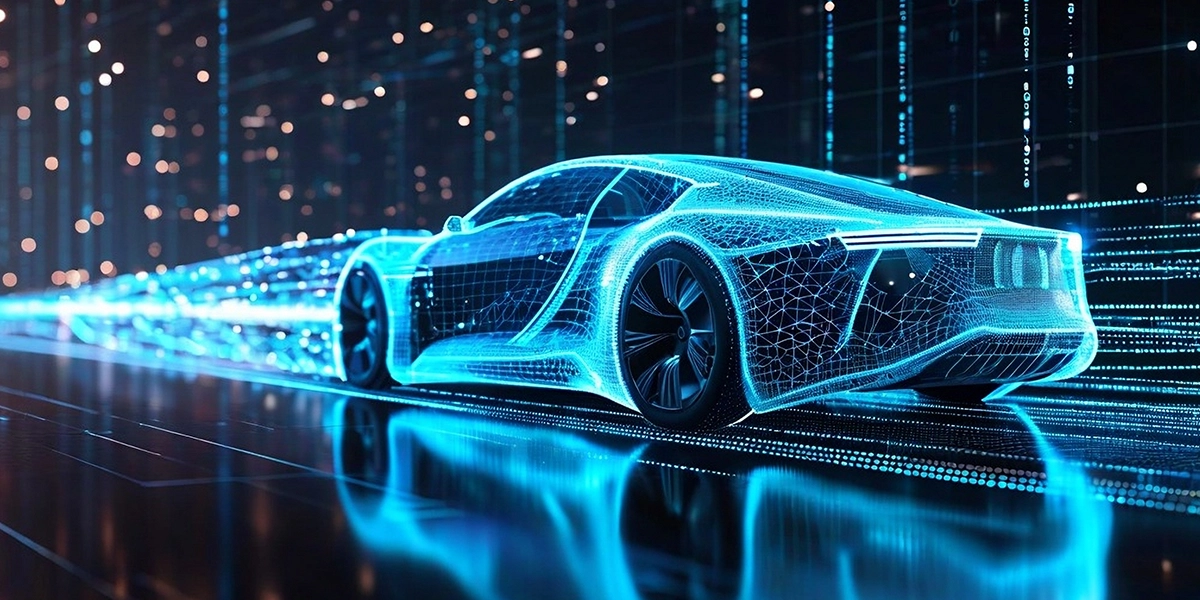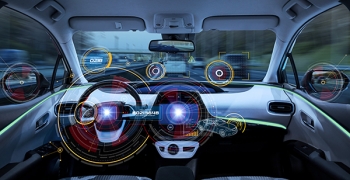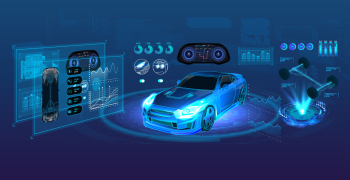In the transition to Software-Defined Vehicles (SDVs), the global auto industry is undergoing a massive makeover. From differentiation strategies to vehicle design and manufacturing, no aspect of the value chain remains untouched by this shift.
As profound as this transition is, the architectural evolution underpinning the move to SDVs is also complex and exciting – complex in that it marks a significant departure from the domain-based architectures that the industry is all too familiar with, and exciting because of the sheer possibilities it unlocks.
In the paragraphs below, read how this evolution is panning out under the bonnet, as well as beneath the roofs of the industry, from R&D to the shop floor.
The Software DNA is Incompatible with the ECU Clutter
The traditional, domain-based architecture that once defined automotive electronics is showing its age. Vehicles historically grew their capabilities by layering domain-specific ECUs – one for braking, another for infotainment, and another for powertrain. Estimates suggest that modern vehicles can comprise close to 150 ECUs. But the SDV paradigm demands a fundamentally different DNA: one that is agile, scalable, and designed for continuous evolution.
In SDVs, functionality is software-driven, not hardware-bound. Legacy ECU sprawl increases communication latency, bloats cabling, and drives up manufacturing complexity. This is antithetical to the modularity and real-time responsiveness that SDVs require. The answer is zonal architecture: consolidating computation into powerful central platforms, while regional zone controllers manage localized sensor and actuator data.
Zonal designs dramatically cut cable weight, streamline diagnostics, and standardize electronic backbones across models and variants. This not only reduces the bill of materials (BOM) and assembly time but allows OEMs to delay variant-specific hardware decisions closer to production, enabling unprecedented flexibility. Over the vehicle lifecycle, zonal designs facilitate faster OTA updates and modular repairs and lower the TCO.
With less hardware variation between trims and model years, OEMs can amortize R&D over multiple vehicles and even adapt configurations late in the production cycle without reengineering the entire vehicle.
Rewiring the Ride for a New Electronics and Software Stack
Zonal architecture cleanses much of the logical and physical bottlenecks that are incompatible with SDVs. Complementing this new blueprint is a new electronics and software backbone, that is built around High-Performance Computers (HPCs), virtualization, and layered abstractions. ECUs are replaced by zonal gateways and centralized compute clusters that host a real-time OS (for safety-critical loops) and a general-purpose OS (for non-critical services and data processing).
Typically, virtualization is leveraged to partition CPU and GPU resources for running isolated workloads, like ADAS perception, engine response, and cockpit infotainment. I/O virtualization gives each VM near-native access to sensors and actuators with millisecond-level latency. Hardware abstraction layers and middleware then expose uniform APIs, so developers can write portable microservices instead of rewriting device drivers for every chip.
This stack delivers three key benefits: deterministic performance for safety functions, rapid OTA feature deployment, and the agility to reuse software across vehicle lines. With these irrefutable upsides, this new stack will trigger a reorganization across the automotive value chain. OEMs, Tier-1 suppliers, and silicon vendors will evolve from transactional parties into co-innovation partners. In this collaborative ecosystem, hardware manufacturers focus on performance and safety certification, while OEMs and software houses iterate features continuously.
Driving on Services: SOA as the New Digital Mobility Engine
Service-Oriented Architecture (SOA) dovetails perfectly with zonal SDV designs, bringing order to the software stack by cleanly segregating infrastructure, application, and presentation concerns. At its heart, SOA treats each function, like route planning, battery management, and voice control as an independent service that communicates over well-defined middleware channels rather than monolithic ECU buses.
In this three-layer model, the infrastructure layer hosts hardware abstraction, virtualization, and data-routing middleware. It marshals HPC resources and secure message buses, ensuring each service gets the CPU cycles, memory and sensor feeds it needs. No need for driver rewrites for every silicon variant.
Above that, the application layer runs discrete microservices: ADAS algorithms, energy-optimization routines, OTA-update managers, and third-party apps. Each service can be versioned, scaled or rolled back independently, accelerating feature rollout and isolating faults. Here, the middleware handles resource allocation, service discovery, and end-to-end encryption, so safety-critical loops stay deterministic while non-critical services evolve at a startup pace.
Finally, the presentation layer stitches these services into a cohesive UX. Because UI components consume the same service APIs, OEMs can refresh dashboards or introduce new HMI paradigms without touching core vehicle logic.
By driving on services, automakers, Tier-1s, and software partners shift from rigid supply chains to a cooperative platform economy, where everyone’s services plug into a shared middleware chassis.
The Future is Closer Than it Appears
By 2030, software’s share of vehicle BOM will climb from under 10% to 50%. This surge will turn cars into constantly evolving digital platforms – think app marketplaces, feature subscriptions, and bi-weekly OTA enhancements. OEMs will compete more on code quality than horsepower as hardware becomes commoditized. In this reality that is much closer than it appears (investors are already rewarding those who are playing into the shift to SDVs), development cycles will collapse from years to months, and global strategic partnerships across software, silicon, and mobility will define market leaders.




